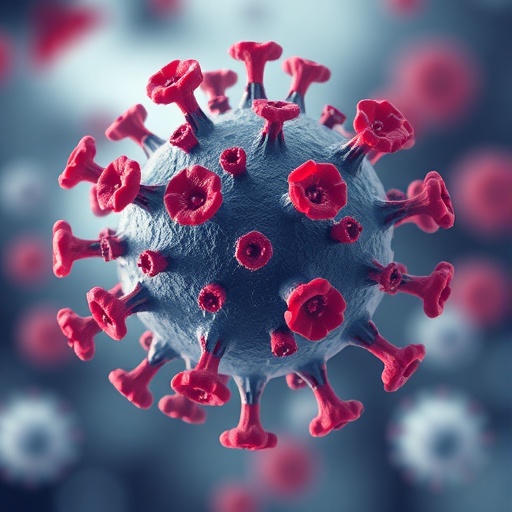Understanding the complexities behind COVID-19 mortality rates is crucial, particularly as the pandemic has exposed stark disparities based on sex and gender. The narrative review conducted by Lemarchand, Pape, and Schwarz delves deep into the multifaceted nature of these disparities, moving beyond biological explanations to encompass a plethora of socio-economic, behavioral, and health-related factors. Their work is a timely reminder that understanding illness and mortality is far from straightforward; it demands an interdisciplinary lens that takes into account various dimensions of human experience.
The study provides an expansive review of existing literature, emphasizing that sex-based differences in biology do not solely dictate health outcomes. For instance, while men are statistically more likely to suffer severe consequences from COVID-19, this phenomenon cannot be chalked up to biology alone. Factors such as lifestyle choices, health-seeking behaviors, and social role expectations also contribute significantly to varying mortality rates. The authors highlight that societal norms and pressures can delineate the behaviors of different sexes, ultimately influencing health outcomes during the pandemic.
Investigating the health-related behaviors of men and women reveals a complex web of influences on COVID-19 mortality. For instance, men are often found to engage in riskier health behaviors, such as smoking and neglecting routine medical check-ups, which may predispose them to poorer outcomes. On the other hand, women generally exhibit higher rates of health-seeking behavior, often utilizing healthcare systems more effectively. Such behaviors paint a picture of how societal structures impact health; the nuances of gender roles cannot be understated in this discussion.
Moreover, previous research has indicated that stress and coping mechanisms differ by gender. Women are more likely to adopt social support networks, while men might resort to avoidance strategies, which can exacerbate health issues. The psychological burden of the pandemic has affected both genders; however, how each copes with this burden can significantly influence health outcomes. This emotional landscape, intertwined with societal expectations, showcases how gendered experiences can modulate responses to health crises like COVID-19.
Socioeconomic status further complicates the intersection of sex and health. The review underscores that marginalized communities, often comprised of both men and women, are disproportionately affected by the pandemic. These groups face a myriad of challenges that can exacerbate health disparities, including limited access to healthcare, unstable employment, and inadequate living conditions. Understanding these systemic issues requires a broad perspective that incorporates the social determinants of health; health cannot be viewed in isolation from the environments in which individuals exist.
The authors also address how gender is often neglected in health studies, particularly during emergencies. Their review advocates for inclusion in research designs that consider gender as a significant variable, as this can lead to more equitable health outcomes. The absence of a gendered perspective in health research can result in policies and interventions that fail to address the needs of all demographics effectively, leaving gaps in care and support mechanisms.
Delving into biological aspects, the authors remind readers that innate differences—such as hormonal differences, immune system variability, and genetic predispositions—play a role in health outcomes. However, these biological influences are interconnected with broader social factors, such as access to healthcare and societal perceptions of health. The intricate dance between biology and social construct challenges traditional viewpoints, advocating for a multifaceted approach to understanding health disparities.
The COVID-19 pandemic is not merely a public health crisis but a social one that highlights the structural inequalities inherent in global healthcare systems. As such, the authors argue that addressing the disparities in mortality rates requires comprehensive policy responses that not only target biological factors but also address the underlying social determinants. This could lead to significant improvements in health equity for vulnerable populations.
Lemarchand, Pape, and Schwarz conclude their review with a call to action for future research to better integrate gender perspectives. This approach not only enriches the scientific literature but also equips policymakers with the necessary tools to create evidence-based interventions. By prioritizing gender-aware research, the scientific community can work towards dismantling the barriers that contribute to health vulnerabilities among different populations.
Ultimately, the review by Lemarchand and colleagues serves as a compelling reminder of the need for holistic approaches in health research and public health policy. It underscores that understanding health disparities is a complex task requiring a combination of biological insight and social awareness. As we move forward, there is an imperative need to harness this understanding to forge a path toward health equity that accommodates the diverse needs of all individuals, regardless of gender.
The COVID-19 pandemic has illuminated many areas of health that require urgent attention, and the insights gathered from this review can help shape our responses. Backed by rigorous research, the authors present a crucial opportunity to rethink how we approach health disparities in the wake of future health crises. By leveraging a comprehensive understanding of sex and gender factors, the medical community can work towards truly equitable solutions to improve health outcomes for everyone.
The narrative presented by Lemarchand, Pape, and Schwarz is a vital addition to an ongoing conversation about health equity. It acts as a reminder that the complexities of health cannot be disentangled from the societal frameworks in which individuals navigate their lives. Research and policy must embrace this complexity if we are to create a healthier world, one that acknowledges and addresses the multifaceted nature of health disparities.
Subject of Research: Understanding sex and gender disparities in COVID-19 mortality.
Article Title: Understanding sex and gender disparities in COVID-19 mortality: a narrative review beyond biology.
Article References:
Lemarchand, P., Pape, M. & Schwarz, J. Understanding sex and gender disparities in COVID-19 mortality: a narrative review beyond biology. Biol Sex Differ 16, 76 (2025). https://doi.org/10.1186/s13293-025-00762-z
Image Credits: AI Generated
DOI: 10.1186/s13293-025-00762-z
Keywords: COVID-19, health disparities, sex and gender, mortality rates, public health policy, socio-economic factors.




